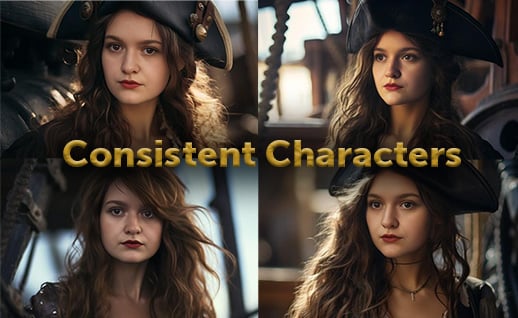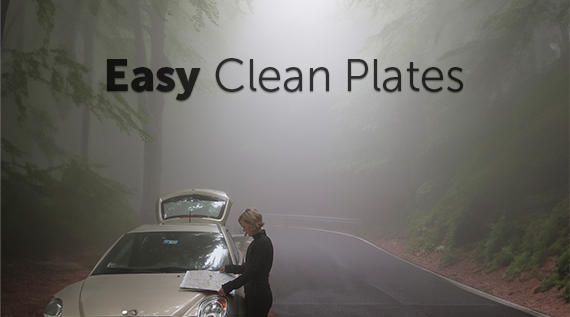It’s rare to find a political ad that doesn’t use stock footage. This campaign, stock footage was often news itself. Sometimes it was because there was too much. Sometimes, stock footage was conspicuous by its absence. But usually it was just wrong.
When it works, nobody really pays it much attention. When it backfires though, the results are newsworthy. Candidates and their ad agencies wind up with egg on their faces, usually declining to comment, sometimes issuing a weak “Oops.” “In fact, the stock image ‘oops’ is a time-honored trail tradition,” says Amber Phillips of the Washington Post.
So why do political candidates and the advertising agencies who work for them rely on stock? Primarily, it’s a matter of budget. Unless custom shots look noticeably better or tell the story significantly better than stock, shooting custom footage may not be worth the cost and effort. Should a producer spend $1,000 shooting a woman in a cafe when they could license a perfectly usable stock clip for a quarter of the cost?
Republican advertising consultant Fred Davis, best known for his work with John McCain’s presidential campaign, has pretty much given up shooting any kinds of scenes he can just as easily buy online. “‘Say you wanted a farmer in Montana,’ Davis says. With stock footage, ‘that might cost you $500. Actually going to Montana, which would only be an incremental improvement, might cost $5,000.’”
A one-minute ad can easily contain 20 or 30 similar scenes, so the costs of shooting custom — and potential savings of using stock — can really add up. If you’re supporting a candidate, wouldn’t you want your campaign donation used efficiently?
Another consideration is time. In our real-time, social-media-driven political environment, if you need to put together a video today about something that happened yesterday, you may simply not have time to shoot custom footage.
There’s also the visual currency of stock footage. It has both an aspirational and a “just like me” quality to it. In the models, we see ourselves … or the people we’d like to be. In the locations, we are transported to the idyllic places of our dreams, the stuff of nostalgic childhood memories. The subjects of stock footage become emblems, icons in their universality. “At the end of the day, a stock shot is a visual representation of an idea or people or policy,” says Democratic media consultant Julian Mulvey.
The fact is, using stock footage in political ads is often an effective and prudent choice. But because this is politics, every ad is subject to a mob of critics waiting to pounce on inaccuracies or misrepresentation. The mob is crowdsourced, and expert at using forums and reverse-image search to sleuth out every gaffe. Here are a few of our favorites from this campaign.
Watch your step
Location has been the biggest minefield. Using clips that are clearly not from a politician’s local area — never mind country — is a BIG no-no. Like Marco Rubio campaign’s use of footage of Vancouver, Canada to illustrate “Morning Again in America.”
Even seemingly generic landscapes — like a snowy forest of pines — were problematic. Especially when shot in (gasp!) Ukraine. Republican Kevin Yoder made the list with an innocuous harvesting scene — set not in his native Kansas, but (again) eastern Europe. Kansas City Star journalist Dave Helling writes, “The campaign seemed to take the mistake in stride. ‘We didn’t have time to get a camera crew out to the Yoder family farm, and we mistakenly used some stock footage without fully vetting where it was shot,’ a campaign spokesman said.”
Trump kicked off his TV ad campaign this year with a spot showing Moroccan refugees as stand-ins for Mexican immigrants. Jeb Bush’s super PAC “Right to Rise” video evoked a bright American future by using clips of the English countryside and construction workers in Southeast Asia. The lesson? Choosing clips for visual impact rather than accuracy can, and probably will, backfire.
Know your people
The use (or overuse) of stock footage actors can backfire too. With the growing mainstream awareness of stock footage, viewers know stock actors don’t actually represent the cause or company whose ad they appear in. They’re not required to prefer that specific brand of toothpaste, find their fictional love interest attractive, or believe in the vision of the multinational company whose spot they smile from. Still, you have to get the basic facts right.
Republican Senator Richard Burr ran a spot supposedly depicting the North Carolina children he was so “genuinely interested” in, yet the footage showed children in Africa. Burr’s team said it was “much ado about nothing,” suggesting it was his Democratic opponent, Deborah Ross, stirring up trouble. (Ross herself had recently come under fire for overusing stock footage models rather than actual residents.)
Despite the public’s willing suspension of disbelief when it comes to stock footage, put stock clips in a political ad, and they may be more likely to question the actors’ allegiances. The majority will presume the actors in these clips are either genuine supporters or actors hired specifically for that commercial. But media critics and political opponents aren’t so forgiving. Katie McGinty’s Senate promotion was called out by “a political observer with a lot of time to burn” for using too much stock footage.
In fact, the use of stock models is so pervasive that not using stock is noteworthy. Here’s Nick Corasaniti of the New York Times on Hillary Clinton’s “Mirror” ads: “The ads, notably, do not feature actors or stock footage — except for one or two scenes in ‘Role Models,’ … rather, those appearing in the ads are the children of Clinton supporters who wanted to help, or veterans who had reached out to the campaign.”
Too much of a stock thing
Julian Mulvey believes “a truly good ad cannot exist on stock alone. The best, in fact, may not rely on any stock at all.” A candidate will probably do better if their ads include real live supporters, he purports. “Real people, real voters, unscripted, is often more powerful than what lots of people can devise around a conference-room table.”
After all, while stock footage can mean all things, its overuse can mean nothing.
Posted by
Dissolve
Dissolve Premium (dissolve.com) has been the go-to for quality stock footage and photos by the world's top creative agencies and production houses. Some of the best filmmakers and stock producers from around the world are with Dissolve — our rapidly growing collection of unique, compelling footage is a testament to that. In addition to our quality stock footage and photography business, we launched Dissolve Creators (dissolve.com/creators/community). A platform for photographers, filmmakers, producers, and designers to connect and share their work as free downloadable content. We offer these creatives (amateur or pro) a bridge to our clientele, gig opportunities, networking opportunities, as well as our knowledge of the stock industry.
.png)
.png)
.png)




